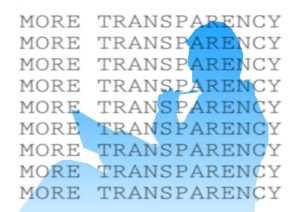Should you be transparent in your communications?
 More and more organisations are now conscious of being transparent in terms of how they run their business and who they do business with. Increasingly, this is becoming a significant PR exercise for some big tech companies who are being more transparent regarding their business activities.
More and more organisations are now conscious of being transparent in terms of how they run their business and who they do business with. Increasingly, this is becoming a significant PR exercise for some big tech companies who are being more transparent regarding their business activities.
Last year, Google and Facebook both released its facts and figures regarding the efficiency of their data centres; indeed many technology writers were surprised by the levels of efficiency each company claimed it had achieved. Google even stated it has the world’s most efficient data centre. Joe Kava, senior director, data centre construction and operations for Google said, “In the same way that you might examine your electricity bill and then tweak the thermostat, we constantly track our energy consumption and use that data to make improvements to our infrastructure. As a result, our data centres use 50 percent less energy than the typical data centre.” Facebook also recently released a tool which shows live updated efficiency figures from its data centres. The reaction to both Google and Facebook was positive and many saw it as the first step towards greater data centre transparency.
Another recent example of using transparency to gain media attention is a social media company Buffer who used a blog post to reveal their pay structure right from the CEO down to the secretary. The company was then inundated with CVs from prospective employees. The media reaction was a little bit more mixed, with many people questioning whether it was an invasion of privacy.
Twitter also recently published a report on the diversity of their workforce. The report revealed that 90% of tech jobs at Twitter are filled by males. Twitter stated that “By becoming more transparent with our employee data, open in dialogue throughout the company and rigorous in our recruiting, hiring and promotion practices, we are making diversity an important business issue for ourselves.” Companies such as Twitter and Google have been under pressure to do more to address diversity in their workplaces. However the reaction towards Twitter was quite negative, with many stating that the lack of diversity at Twitter was not surprising with over 90% of their workforce being male.
Using the media can aid businesses in demonstrating how transparent they really are, for example it can give consumers a chance to show exactly how things operate. However, businesses need to be aware that becoming more transparent might be seen by some as merely a back slapping exercise, which could then risk in negative PR. Therefore transparency must be managed correctly by businesses and not used in the wrong way.